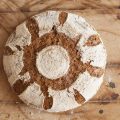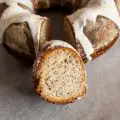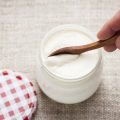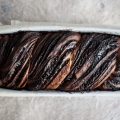If you’re looking for a bread that looks like a pizza, but tastes like heaven, then why not make sourdough focaccia bread. This bake will ensure that you create a tangy focaccia, loaded with your choice of toppings, and served as a sandwich, or snack. Read on for a simple sourdough focaccia bread recipe that’ll delight your taste buds!
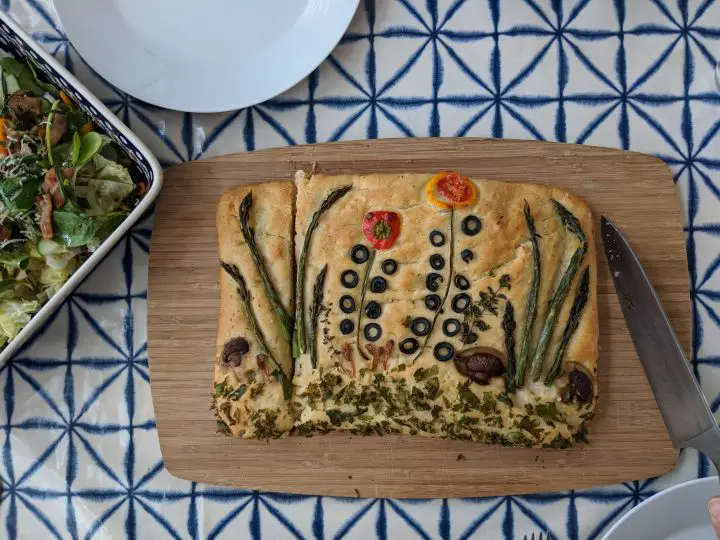
Table of Contents
- What is Sourdough Focaccia Bread?
- What Makes Focaccia Bread so Great?
- How to Make Sourdough Focaccia Bread
- Baking Schedule
- Why is My Sourdough Focaccia Dense?
- How to Eat Sourdough Focaccia Bread?
- More Sourdough Recipes
- Sourdough Focaccia – Must Try!
- Sourdough Focaccia Bread FAQs
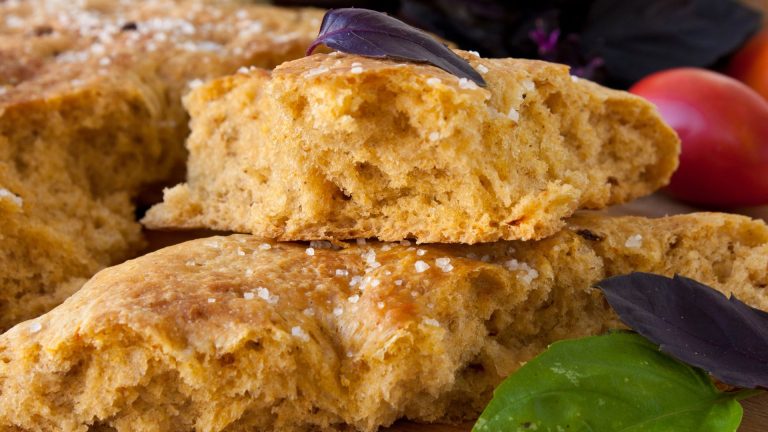
Sourdough Focaccia Recipe
This brilliantly simple sourdough focaccia recipe, starts off as a sticky wet mess, that will most probably cling to your fingers. But through the powerful process of fermentation, it’ll transform into a light, airy bread, that you can enjoy at any time of day!
This sourdough focaccia recipe requires simple ingredients that you may already have sitting in your pantry.
- Total Time: 30 minutes
- Yield: 1 loaf 1x
Ingredients
- 400g Water
- 150g Sourdough Starter
- 300g All Purpose Flour
- 225g Bread Flour
- 18g Honey
- 18g Olive Oil
- 25g Salt
- 100g Extra Virgin Oil
Instructions
- Begin by placing water, and active starter in a large bowl, then mix them together using a spatula, or Danish dough whisk.
- Next add the all purpose flour, bread flour, honey and extra virgin olive oil to the bowl. Mix with a spatula, till the ingredients come together to form a shaggy dough.
- Cover your bowl with cling film and let the sourdough focaccia dough sit for 1 hour.
- After the 1 hour is up, you’ll need to bring your dough into a ball. Work your way around the bowl, and grab your sourdough focaccia dough from the outside, stretch it up and over itself, then into the center. While you’re doing this, you should feel the dough beginning to strengthen. Don’t worry if your dough isn’t perfectly smooth or tight, just continue to work around the bowl, stretching and folding for about 5 to 6 minutes.
- Now it’s time to leave your dough to ferment. Cover the bowl with a plastic wrap, and leave the dough alone, so that it can double in size.
- Once the dough has doubled, it’s time to shape the dough.
- Use a dough scraper to help place the dough into a lined baking tray, rectangular pan, Dutch oven or cast iron skillet. Grease your palms with a little olive oil, and gently pull the dough so that it fills the tray.
- Leave your dough to rise again. During this time your focaccia dough should spread, and fill the tray beautifully.
- The bubbly sourdough focaccia bread will appear incredibly voluminous, and you’ll need to dimple the dough and add some toppings. Pour extra virgin olive oil over the top of the dough, then push the tips of your fingers into the dough to create little dimples. You may see some bubbles pop up while doing this.
- Sprinkle salt, and top with fresh herbs if you wish, then preheat oven to 392°F.
- Place the dough into the preheated oven and bake the focaccia for 30 minutes, or until golden brown.
- Cook Time: 30 mins
- Category: bread
- Cuisine: Italian
What is Sourdough Focaccia Bread?
Focaccia bread refers to an Italian bread that is normally baked with high quality olive oil, fresh rosemary, and salt. Traditionally, this type of bread is made with lots of yeast, and baked when smothered in olive oil, so that when baked it has a perfect crusty golden top, with soft, chewy crumb on the inside.
Incorporating a sourdough starter in this focaccia recipe will ensure that your bread emerges with a unique and delicious tangy taste, that won’t go undetected. It is especially scrumptious when served with a variety of toppings, a bit like a pizza!
What Makes Focaccia Bread so Great?
Focaccia stands out from other kinds of bread, mainly because of its shape, and wonderful toppings.
The bottom of the baking pan is greased with lots of olive oil, ensuring that the oil will seep into the dough when baking, providing the focaccia with a brilliant taste and texture. This bread is flatter than other types of bread, which also makes it a great bread for sandwiches!
How to Make Sourdough Focaccia Bread
This brilliantly simple sourdough focaccia recipe, starts off as a sticky wet mess, that will most probably cling to your fingers. But through the powerful process of fermentation, it’ll transform into a light, airy bread, that you can enjoy at any time of day!
Ensure that you are using a healthy, active sourdough starter, that has been recently fed, and bubbling.
And here’s how to make it!
Ingredients Needed
This sourdough focaccia recipe, requires simple ingredients that you may already have sitting in your pantry. Keeping ingredients without using them might cause panty months.
Use a digital scale – if you have one – for accurate measurements, and this will ensure that your focaccia dough is baked to perfection.
Here’s what your recipe needs:
- 400g Water – You should use 110°F of filtered water or unchlorinated tap water. Essentially, the chlorine will prevent your sourdough starter from becoming active, resulting in dense loaves.
- 150g Sourdough Starter – Ensure that your sourdough starter is active and bubbly.
- 300g All Purpose Flour – You can use any type of all-purpose flour, and add some white flour to the mix, to guarantee that the dough and baked bread remain light.
- 225g Bread Flour – You’ll be working with a wet and sticky dough, so the additional gluten from the bread flour, will help maintain a good structure. If you have to, you may use more all-purpose flour, but using bread flour will produce better results.
- 18g Honey – An optional inclusion of sweetness, that will also boost the fermentation process of the starter.
- 18g Olive Oil – Another optional element, that will provide a wonderful softness to the focaccia dough.
- 25g Salt – A dash of salt added to your dough will help balance the flavours nicely.
- 100g Extra Virgin Oil – You’ll need additional olive oil to grease your pan, and spread on top of your dough.
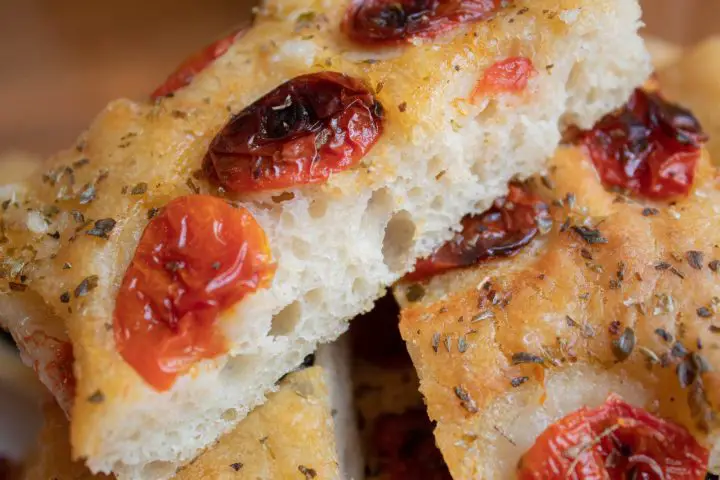
Instructions
There are many methods involved in making sourdough bread. For instance, you may choose to cold ferment your dough in the fridge overnight before baking. While that’s absolutely fine, here’s my process in baking this delicious sourdough focaccia bread:
- Begin by placing water, and active starter in a large bowl, then mix them together using a spatula, or Danish dough whisk.
- Next add the all purpose flour, bread flour, honey and extra virgin olive oil to the bowl. Mix with a spatula, till the ingredients come together to form a shaggy dough.
- Cover your bowl with cling film and let the sourdough focaccia dough sit for an hour.
- After the one hour is up, you’ll need to bring your dough into a ball. Work your way around the bowl, and grab your sourdough focaccia dough from the outside, stretch it up and over itself, then into the center. While you’re doing this, you should feel the dough beginning to strengthen. Don’t worry if your dough isn’t perfectly smooth or tight, just continue to work around the bowl, stretching and folding for about 5 to 6 minutes.
- Now it’s time to leave your dough to ferment. Cover the bowl with a plastic wrap, and leave the dough alone, so that it can double in size.
- Once the dough has doubled, it’s time to shape the dough.
- Use a dough scraper to help place the dough into a lined baking tray, rectangular pan, Dutch oven or cast iron skillet. Grease your palms with a little olive oil, and gently pull the dough so that it fills the tray.
- Leave your dough to rise again. During this time your focaccia dough should spread, and fill the tray beautifully.
- The bubbly sourdough focaccia bread will appear incredibly voluminous, and you’ll need to dimple the dough and add some toppings. Pour extra virgin olive oil over the top of the dough, then push the tips of your fingers into the dough to create little dimples. You may see some bubbles pop up while doing this.
- Sprinkle salt, and top with fresh herbs if you wish, then preheat oven to 392°F.
- Place the dough into the preheated oven and bake the focaccia for 30 minutes, or until golden brown.
Baking Schedule
A baking schedule is essential for many home bakers, to ensure that your sourdough starter is ready for baking with. Here’s what you’ll need to do for a cool and warm kitchen:
Cool Kitchen
- 48 Hours Before Baking: Feed your sourdough starter before going to bed
- 8 AM The Next Morning: Combine the dough ingredients together, then place it in the refrigerator to cold ferment
- 10 AM The Day After That: Shape and bake sourdough focaccia, after fermentation has been completed
Warm Kitchen
- Day 1: Feed your starter in the morning, combine the ingredients for the dough in the afternoon, and place it in the fridge
- Day 2 or 3: Shape and bake the dough after it has fermented
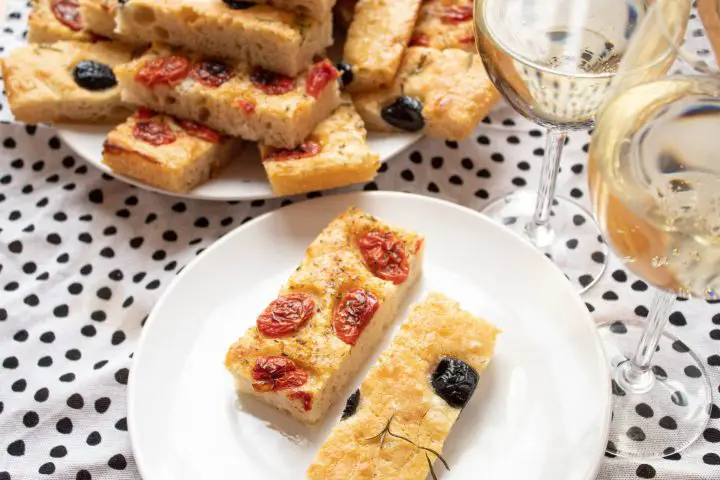
Why is My Sourdough Focaccia Dense?
There can be a number of possibilities linked to a dense sourdough breads.
For instance, if your sourdough starter was not active or strong enough, it won’t carry enough fermentation power to help the dough rise and create air bubbles.
Another possibility is that your water may have been too hot, killing the good bacteria and wild yeasts in your sourdough starter.
Moreover, excessive use of water can contribute to a dense sourdough focaccia bread.
Troubleshooting Sourdough Focaccia Bread
While this is an incredibly easy recipe, there may be a variety of issues that you can encounter during this process.
Let’s take a look at some helpful troubleshooting tips that you can use in case you encounter any issues during the process of creating this wonderful recipe:
- A Very Wet and Sticky Dough
- Type of Flour
- No Bubbles
- Dough Sticks to Fingers When Dimpling
A Very Wet and Sticky Dough
A delicious focaccia bread requires a high hydration dough. Initially when forming the dough you’ll find that it becomes really sloppy, but the wet dough should gain strength as you perform your series of stretch and folds. It will then gain additional strength during bulk fermentation.
Type of Flour
Bread flour is probably the best type of flour for this recipe, but if you desperately need to use all purpose flour, you can reduce the amount of water by up to 50g, because all purpose flour does not perform well with higher hydration.
No Bubbles
Ideally the dough needs to be proofed at warmer temperatures like 75°F. This is so that you’ll achieve nice, big bubbles in the dough. While the dough is proofing in its pan, you should notice some bubbles forming.
Dough Sticks to Fingers When Dimpling
If the dough sticks to your fingers, when dimpling, simply moisten your fingers with a little olive oil. The dough will stop clinging to your fingers, and you’ll add more flavor to the focaccia bread.
How to Eat Sourdough Focaccia Bread?
The great thing about sourdough recipes is the versatility. A simple loaf of sourdough bread, with a moist and chewy crumb, can be served with anything you like, from a variety of cheeses, to delicious soups, there’s nothing that holds sourdough back!
Similarly, sourdough focaccia bread is just as versatile. When trying to find something to serve with focaccia, simply soak this incredible bread in a splash of extra virgin oil, add some rosemary, and salt, then tear and slice or toast for a splendid snack.
Some additional, fantastic focaccia toppings include:
- Fresh tomato, red onion, olives, pepperoni, salami, shredded ham or bacon, mozzarella cheese, and fresh herbs
- Olives, rosemary and olive oil
- Thinly sliced green onions, and kosher salt
- Decorate the focaccia with red or green grapes, and drizzle with extra virgin olive oil.
- Spread melted butter, sprinkle cinnamon sugar and dip this fantastic art piece into melted chocolate, (trust me it’s irresistible).
More Sourdough Recipes
If the thought of sourdough focaccia had you salivating, then have a dive at one of these recipes:
- Sourdough Oatmeal Bread
- Multigrain Sourdough Bread
- Homemade Sourdough Pasta Recipe
- Sourdough Baguette Recipe
Sourdough Focaccia – Must Try!
This sourdough focaccia recipe is super easy to create. As long as you’re generous with the salt and olive oil, you’re guaranteed a delicious result.
Why not try this on the side of chicken riggies? Click through for a fantastic recipe.
Do not be discouraged by the wet, sticky dough sticking to your fingers. This means you’re on the right track!
Sourdough Focaccia Bread FAQs
What Baking Pan to Use for Sourdough Focaccia?
You can bake the best focaccia bread in any pan that has a lip, even a simple baking tray will do the job. Baking large breads like focaccia, cook well in a baking pan lined with parchment paper, so that there is enough room for the large dough to rise and spread before baking.
Many of us adore loaves that crisp up beautifully at the bottom, and for this reason, cast iron skillets greased with olive oil, make a better option.
What to do With Leftover Sourdough Focaccia?
As with any type of leftover bread in sourdough baking, you can transform them into something scrumptious.
Slice the focaccia in half and toast the slices, then top with butter, and enjoy. Additionally you can use this as a sandwich bread, with slices of cheese, tomatoes and salami, for a fantastic snack.
How about some mini pizzas made by spreading pesto (I’ve got a pesto sourdough recipe using pumpkin seed pesto you might like) or pizza sauce over the focaccia bread, top with your choice of sprinkled cheese, and shredded meats. Then toast this in the oven for 10 minutes, and serve with your favorite dipping sauce, for a mouth watering meal!

